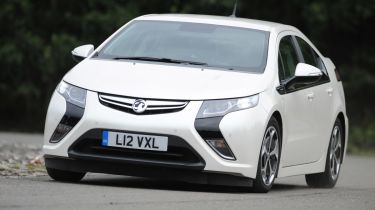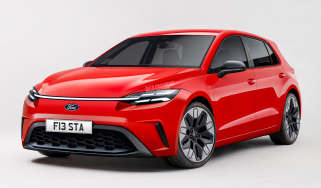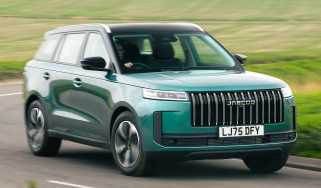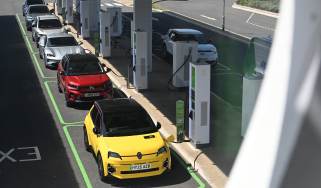Vauxhall Ampera
Is groundbreaking range-extender still the efficiency king?
Its revolutionary drivetrain remains the best compromise between electric power and petrol range that we have tried. The Ampera would make a relaxing commuter car and, as long you charged it overnight, there’s every chance you could go months between petrol fill-ups. That means it delivers low running costs which the Prius can’t match.
Revolutionary cars often have a troubled start to life, but when we first tested the range-extending Vauxhall Ampera, it managed to beat a host of talented rivals – in the shape of the Audi A4, Nissan Leaf and Lexus CT 200h.
Following up that victory was never going to be easy, but on paper the Ampera compares favourably with the new Prius Plug-in. It was designed first and foremost as an electric car, so its Voltec drive system is geared towards giving the maximum zero-emissions range (up to 50 miles on a charge). As a result, the Vauxhall claims some amazing figures: 235mpg fuel consumption and CO2 emissions of only 27g/km.
It looks suitably futuristic, too, with styling that seems decades ahead of its time. Like the Prius, the wedge-shaped body has been designed to slip through the air as easily as possible, but gloss black window inserts and boomerang-shaped lights add flair. As it sits lower to the ground than the Toyota, it also has a more dynamic stance.
Used - available now

2024 Nissan
Ariya
12,471 milesAutomaticElectric
Cash £25,490
2021 Lexus
UX 300e
39,392 milesAutomaticElectric
Cash £16,950
2023 Hyundai
i30
23,040 milesManualPetrol1.0L
Cash £14,801
2021 Vauxhall
Mokka
16,283 milesAutomaticPetrol1.2L
Cash £15,795The driver-orientated interior adds to this impression, with low-slung two-tone leather seats and swooping white door inserts that wrap around the top of the dash. Modern touches like the bright colour displays and buttonless centre console make it feel very hi-tech, even if some of the plastics feel cheap. Our Ampera had done just over 6,000 miles, but there were already signs that the leather trim was beginning to turn shiny with wear; the Prius feels more robust inside.
As you’d expect of a flagship model, the Vauxhall has got lots of kit, with an energy-efficient Bose stereo, 30GB music hard drive and sat-nav. The Ampera’s bulky T-shaped battery pack eats into cabin space, meaning practicality suffers. This car is a strict four-seater, while there’s 143 litres less boot space than in the Toyota with the seats in place. Still, these cars aren’t meant for very long journeys.
On batteries alone, progress is smooth, and the cushion of the petrol range means you can exploit the instant torque from the electric motor. Engage Sport mode and the petrol generator gives added assistance, helping to make the Ampera over a second quicker than the Prius both from 0-60mph and 50-70mph.
Like the Toyota, it has some issues at low speeds, where the firm ride and over-assisted regenerative brakes affect smoothness, but otherwise the refinement is exceptional. It also grips better than the Prius and there is less dive and body roll through tight corners.
The biggest difference is the more useful range: as long as you charge it once a day, you could go months between filling the Ampera’s fuel tank. But does that justify a higher price and less practicality?



